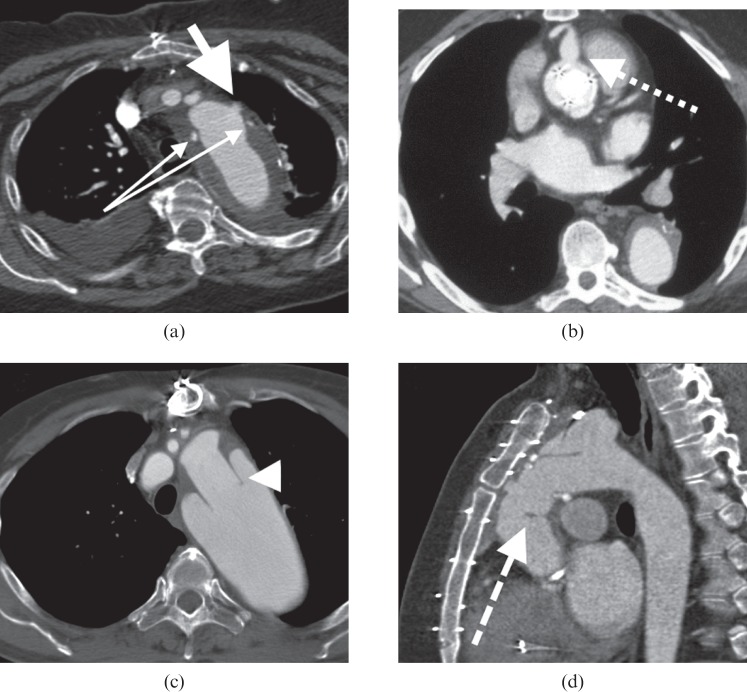Figure 16.
CT angiogram images showing normal findings in patients who have undergone either root, ascending aortic or arch replacements. (a) Typical contrast out-pouch of the reperfusion port (big arrow) and the high-density felt material that lines the anastomosis to reinforce it (narrow double arrow). (b) Typical appearance of a coronary button (dotted arrow), which consists of a circular section of native aorta: this was used to aid anastomosis of the coronary artery to the new interposition graft replacing the root. (c) Typical elephant trunk appearance whereby the interposition graft extends into the native proximal descending aorta (arrowhead). This can then be used to anastomose any subsequent grafts that are required to replace the descending aorta in the future. (d) Graft fold in the ascending aorta (dashed arrow). These are commonly seen and very rarely cause any significant haemodynamic effect or clinical issues. This patient also has residual dissection in the arch which was not replaced.

